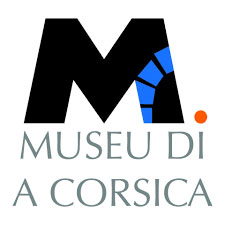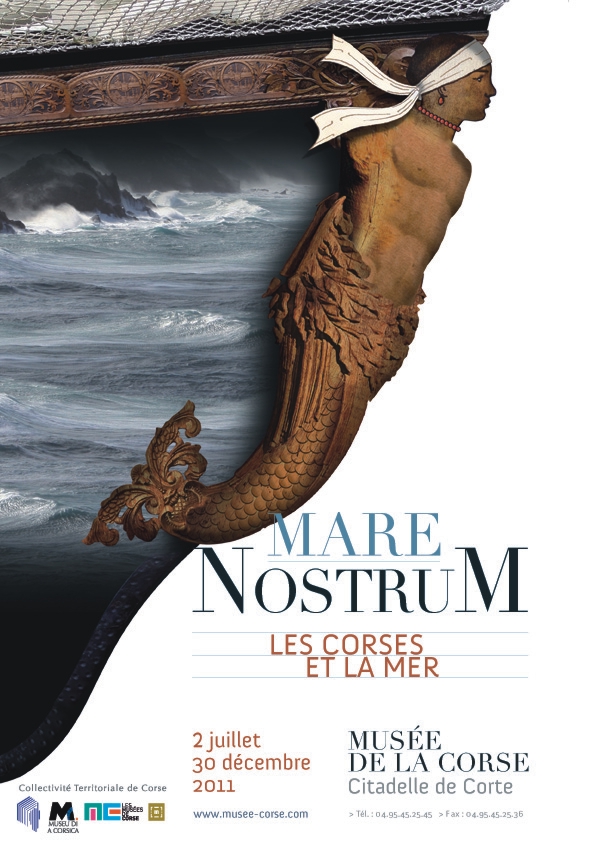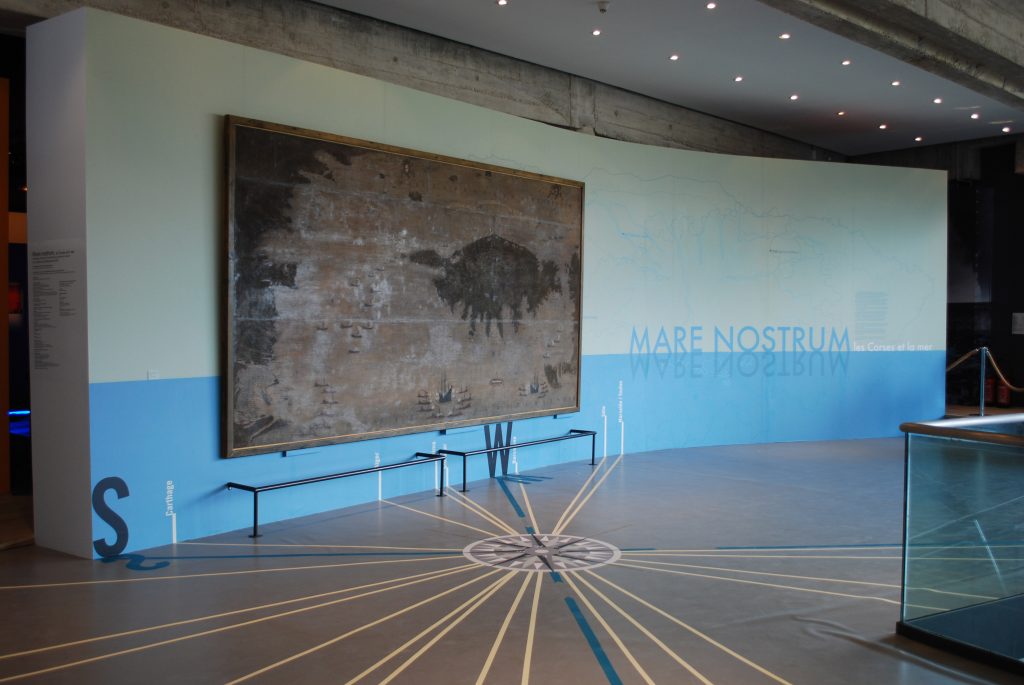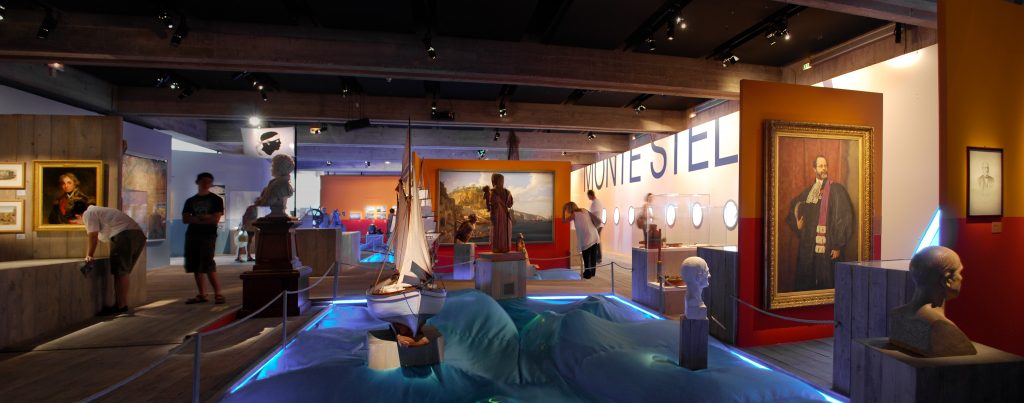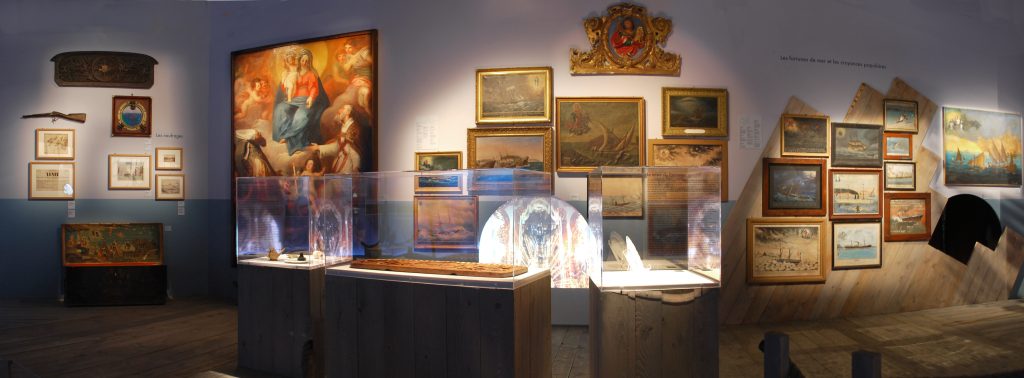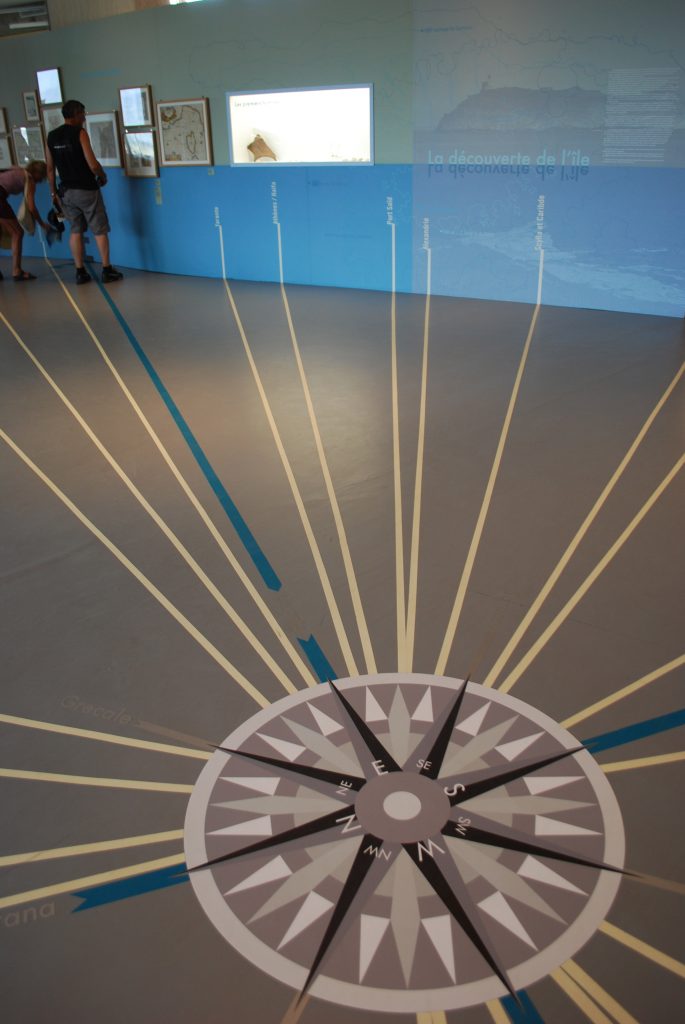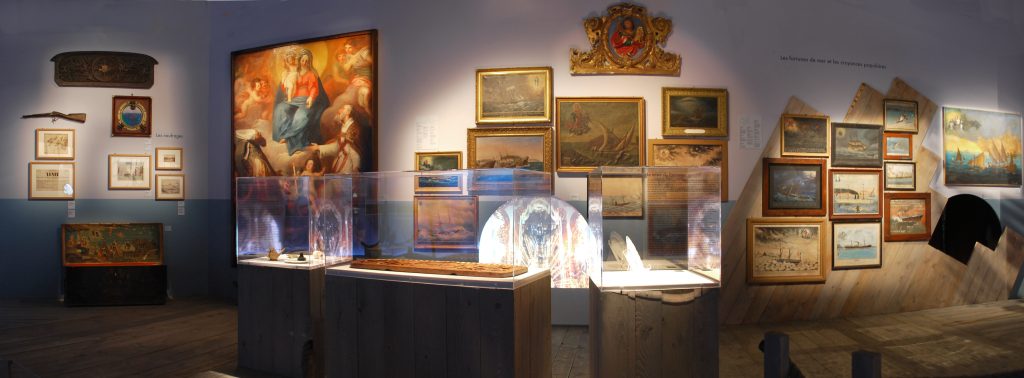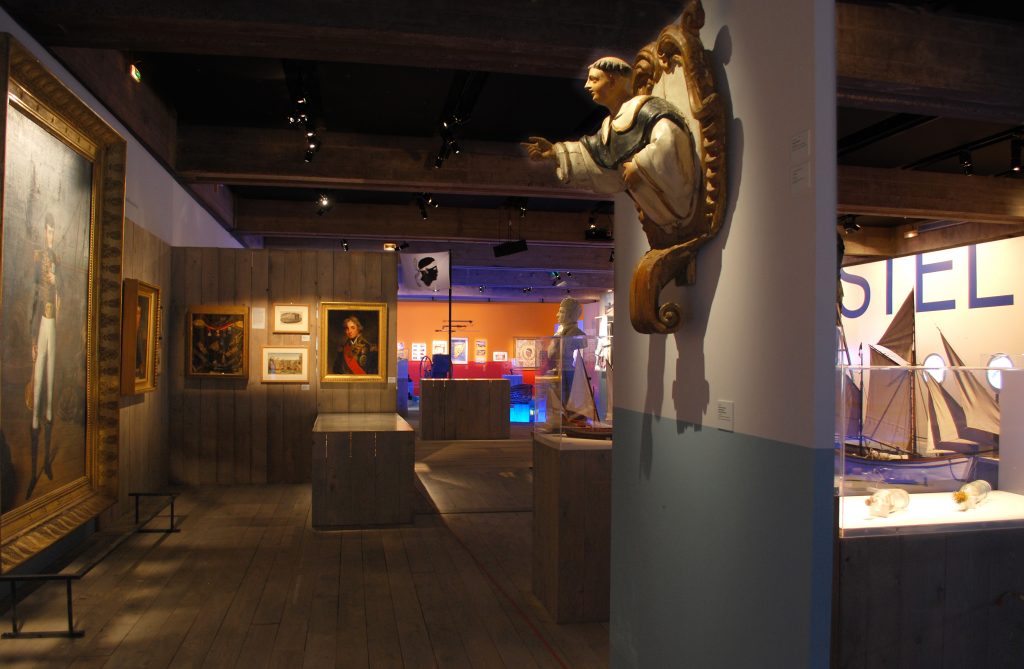The Corsicans and the sea
From 2nd July 2011 to 31st March 2012
“Corsica is a mountain in the sea…
This representation which denotes the territory first by the mountain marks the collective imagination.
However, the sea imposes itself to the Corsicans, it is today as yesterday, in the heart of the economic, social and cultural questions of the island.
THIS EXHIBITION OF 360 WORKS IS DIVIDED INTO THREE SECTIONS:
The discovery of the island
In Corsica, the first human settlements are attested in the VIIIth and even at the end of the IXth millennium before our era. In ancient times, the cities of Alalia and Mariana linked the island to the Roman Empire. After the barbarian and Saracen invasions, the island came under the domination of powerful maritime cities such as Pisa and Genoa.
From the 16th century, Corsica became a major stake in the western Mediterranean. Catherine de Médicis described the island as a “magnificent horseman” between Italy and Spain.
In the XVIIIth century, France and England imposed themselves in the Mediterranean, Corsica became French.
Geographic maps illustrate this succession of interests for the island. Marine cartography evolved and became a more precise navigation tool, indicating ports, coves and dangers.
Traces of the first inhabitants, marine maps and contemporary artists’ views reveal the maritime landscapes of Corsica. A discovery of a territory between sea and land felt at the same time as an opening on the world and a border with the outside.
The sea and its dangers
The sea is a space of freedom, travel and exploration that seduces modern man but it once inspired the mistrust of islanders because it carries great dangers.
The history of Corsica bears witness to great naval battles, Alalia in 545 BC, Meloria in 1284 and Calvi in 1794. Sailors and privateers have distinguished themselves in maritime battles such as Vincentello d’Istria, Admiral Andrea Doria, the privateer Dragut, Commander Luce de Casabianca and Admiral Horatio Nelson.
The sea has long been a mysterious, terrifying space, difficult to master. If the Mediterranean, an inland sea, seems more reassuring than the ocean, the unleashing of the elements often renders man powerless, as recounted in numerous navigation chronicles. Corsica was the scene of several shipwrecks such as those of the Sémillante and the Tasmania.
Space of exchanges, the sea is also vector of diseases.
Faced with these perils, the Corsican took refuge in the mountains and established an ambiguous relationship with the coast.
Until the 19th century, the sea monsters that illustrate the maps symbolize these fears. Barbarian threats, epidemics, invasions, sea battles, sea fortunes and shipwrecks feed stories and popular beliefs.
Maritime activities
Between the 16th and the 19th century, the main part of the Corsican navy was a seasonal activity of coastal navigation which was practiced in the Tyrrhenian Sea on board boats of the following types: skiff, tartan, felucca, gondola, brig-goélette….
From the first steam navigation companies to the arrival of ferries, the evolution of techniques has changed the way maritime transport to Corsica is carried out. The speed and frequency of crossings marked an important stage in the relations between Corsica and the continent.
Artisanal fishing, an ancestral activity on the island, is now in decline. The selection of species fished has evolved to focus on more profitable catches such as lobster. This represents up to 60% of the turnover of the 209 professional fishermen of the island.
The reintroduction of traditional traps is being tested in order to limit the erosion of the stock.
The census of seafarers in Corsica shows that maritime activities were at their peak in the 19th century and collapsed with the end of the sailing navy. While certain skills were lost, others appeared in the new professions of the sea with the advent of tourism. Water sports and yachting developed, creating a new industry.
The coastal areas host a varied set of economic activities: shipbuilding, fishing, transportation of goods and people, port activities and tourism.
Curator of the exhibition:
Pierre-Jean Campocasso, Regional Ethnologist, Scientific Director of the Museum of Corsica.
